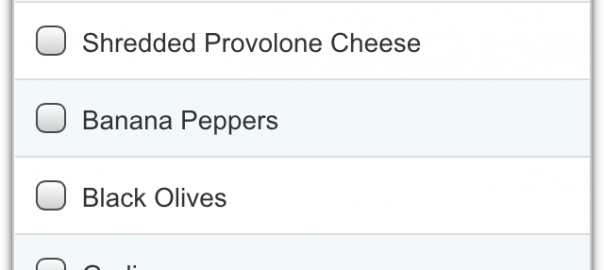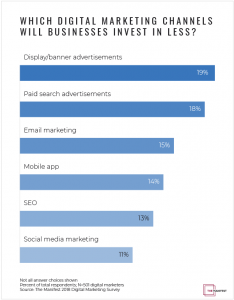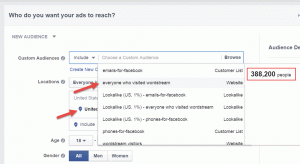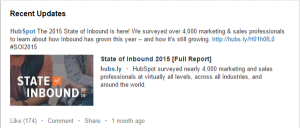
There’s no disputing it, achieving success with paid search on mobile devices is challenging. Conversion rates are significantly lower than those on desktops, ad real estate is limited and CPCs are on the rise. What’s even more discouraging is that we’re seeing more and more searches conducted on smartphones. It may not be a pretty picture, but the good news is, there’s quite a bit that advertisers can do to turn their performance around.
Here are three easy hacks to help you dominate mobile PPC:
Solution #1: Ditch Your Non-Converting Keywords
I can’t tell you how many advertisers neglect to take action on low-converting mobile keywords because they assume these words are contributing to untracked offline or cross-device conversions. While this may be the case for some of these terms, businesses with smaller budgets who are struggling to meet their CPA goals cannot simply “hope” these terms are making a positive impact on their account. Rather than playing this mobile guessing game, I urge advertisers to ditch keywords that aren’t producing conversions on mobile devices. By eliminating these keywords from their mobile strategy, they are cutting out pricey, useless impressions and clicks, which creates an immediate uptick in overall mobile conversion rates.
To implement this strategy, first take the time to identify which keywords are leading to conversions. It’s likely that these high purchase intent keywords will fit into one of these three buckets:
1. “I know exactly what I want” – These are super specific terms that indicate that the searcher has already done their research and knows exactly what they wish to purchase.

2. “I’m ready to buy” – These keywords include purchase specific terms like “buy”, “discounts”, “free shipping”, a dead giveaway that the searcher is in purchase-mode.

3. “I need this now” – This term indicates that the searcher has encountered an emergency and needs to take action immediately.

Once you’ve identified your mobile converters, prioritize them! Organize them into separate campaigns with specific budgets/CPA goals and set competitive mobile bid modifiers to ensure they are competitive. You can then house your non-converters in separate campaigns with low (potentially even -100%) bid modifiers.
Upon adopting this strategy, you should see greater returns from your mobile paid search efforts. Depending on your performance, you may wish to funnel this money back into your mobile strategy or redirected it to another PPC campaign that yields even higher conversion rates.
Solution #2: Engage Searchers Directly from the SERP
When I was a kid, I was a big fan of the Where’s Waldo series. I spent countless hours staring at those crazy-detailed illustrations trying to find the elusive little man in the striped shirt, just like the one pictured below. Nowadays, I’d be willing to bet that very few kids have the patience to make it through a Where’s Waldo puzzle.

Find Waldo yet? No? Me either. I gave up.
Data demonstrates that, as a society, our attention spans are rapidly declining. According to a study conducted by Microsoft in 2013, the average human attention span has decreased from 12 seconds in 2000 to 8 seconds in 2013. In fact, I hate to break it to you, but even a goldfish has a longer attention span than the average human being.
Now imagine one of these easily distracted people trying to find and purchase your product on a mobile device. Consider how many distractions they encounter on their phone while doing so (push notifications, emails, text messages). Now, factor in offline distractions. In such a fast paced environment, it’s a wonder anyone actually manages to follow through with a conversion!
If you’re spending considerable resources on mobile paid search, this is a very concerning phenomenon. How can you ensure that the traffic you’ve worked so hard to attain actually follows through and converts? Engage them early on! Use unique ad formats to encourage them to take action from directly within the SERP. Once they’ve made this initial investment, they’ll be far more likely to follow through and convert.
We all know that we should be using mobile preferred ad copy to appeal to mobile searchers, but savvy advertisers go much further to secure user engagement on the SERP. Here are a few strategies worth exploring:
- Ad Extensions: Mobile searchers are significantly more likely to convert after clicking on extensions than through a regular ad headline. We’ve found the best results using call and app extensions (or both). You can learn more about these options in our Ad Extensions Cheat Sheet.

- New Mobile Ad Formats: Even Googlers recognize that it’s tough to hold a mobile users’ attention and, luckily, they’re committed to helping us do it! Earlier this year, Jerry Dischler, VP of Product Management at Google, announced that AdWords will be releasing new, industry-specific mobile ad formats. These new formats give users significantly more information about the products (including pictures!) from directly within the SERP. So far, they’re only available for 4 industries (automotive, travel, finance and shopping), but we expect to see many others released in the coming months.

All the information you need to book a hotel room, right on the mobile SERP!
- Purchases on Google: Nicknamed “the buy button”, this is the holy grail of mobile PPC. While it has only been released in a limited fashion thus far, this new feature gives users the option to make a purchase WITHOUT leaving the SERP! We predict that this will be a total game changer for retailers advertising on mobile devices.

Solution #3: Shake Up Your Mobile Landing Pages
Nothing irks me more than a painfully hideous mobile landing page. You can read my full rant (complete with examples and tons of data) here, but the bottom line is, most mobile landing pages stink. They’re outdated, overly simplistic and just plain drab. What’s worse is that advertisers actually created these terrible pages on purpose…many moons ago. Yep, most of these crappy mobile landing pages were developed back in 2010-2011, when mobile search was just coming to the forefront and phones were significantly less sophisticated. If you’re guilty of sending your hard-earned mobile traffic to outdated landing pages, it’s time to rethink your strategy.
The key to building a perfect mobile landing page nowadays is truly catering it to your audience. Ideal page designs differ based on marketing goals, so I’ve pulled a couple of my favorites, spanning different industries, to share with you:
E-Commerce Mobile Landing Page (Short Sales Cycle): ASOS

ASOS, an online clothing retailer, has perfected the e-commerce mobile landing page. As you can see, they provide a seamless experience from start to finish. Users can develop a good feel for their products, as they offer a variety of clear pictures and the “catwalk” option to see them in action. The buttons on the product pages are large enough to make it easy to refine the selection you’re looking for and, once you’ve added the item to your cart, the checkout process is nicely streamlined. As you complete the purchase, their forms dynamically swap keyboards (numeric or alphabetic), based on the information they’re requesting. Finally, they even integrate with Facebook to create a customer profile for you, which eliminates the need to plug in shipping and purchase details in the future. No doubt, this accommodating, customer centric, approach has paid off. Believe me, I have a credit card bill to prove it!
E-Commerce Mobile Landing Page (Long Sales Cycle): blinds.com

Blinds.com knows that it’s unusual for users to impulsively buy custom blinds. So, when a searcher (who is likely in research-mode) lands on their mobile site, they make a point to gain his email address so they can continue to market to him in the future. By promising exclusive offers and promotions, they make this an enticing offer to a potential customer. From there, they keep it simple. Their product images are clean and simple and the checkout process is fairly straight-forward.
Lead Gen Mobile Landing Page: Gruber Law

As accident and personal injury lawyers, the guys at Gruber Law have learned to prioritize phone leads over all else. Callers tend to be in an emergency situation and are looking to talk to a lawyer instantly, meaning they are extremely likely to convert. To make it as easy as possible for these searchers to call in, Gruber Law’s mobile landing pages provide multiple opportunities for click-to-call and feature their phone number very prominently. Even their motto, “One Call, That’s All”, encourages users to give them a ring! They also include videos of the partners to show searchers that they are indeed a legitimate, trustworthy firm. In an industry where many have a poor reputation, these videos help gain a lead’s trust.
Testing Is Key
Once you’ve taken the plunge and created your new mobile landing pages, it’s crucial to test their effectiveness. I’ve borrowed one of my favorite testing methods, “The User Is Drunk Test” from Squareweave, a digital agency based in Australia. Their philosophy is, if you can design a mobile landing page that can be easily navigated by someone who is drunk, it’ll work for just about anybody.
I figured I’d give their 4-step strategy a shot on the Domino’s website (I’ll leave it to you to guess whether I was drunk or not). Here’s my assessment:
Step #1: When you’re drunk, your attention to detail is impaired. A mobile landing page should use pictures to reiterate words on important buttons.

As you can see, Domino’s nailed this. Both the delivery and carryout buttons are accompanied by pictures and words.
Step #2: When you’re inebriated, your vision rarely 20/20. Words and images on your mobile site should be sized appropriately.

Domino’s failed on this front. The words on their landing pages are nearly impossible to read from afar (or when slightly blurred) and the teensy, tiny radio buttons are challenging to click on, especially if you’re motor skills aren’t 100%.
Step #3: Drunk users are more likely to give up when they encounter challenges. The purchase experience should be seamless.

As you can see, Domino’s struggled here as well. My attention waned as I scrolled through their never ending offers and I nearly abandoned my purchase.
Step #4: Just because a user is drunk, doesn’t mean they are stupid. While we may not make the wisest decisions when we’re intoxicated, our IQ’s don’t plummet. It’s critical that mobile advertisers never dumb down their sites for their mobile audience.

Domino’s does an excellent job with this. They provide all of the same customization options, regardless to hungry mobile customers.
My verdict? While there’s definitely room for improvement, Domino’s mobile website provides a decent experience for users!
In Closing
Despite the not-so-bright status of mobile ad performance today, the silver lining is that there are many actions that we, as advertisers, can take to vastly improve it. If have any addition strategies to recommend, please don’t hesitate to share them below!
Find out how you’re REALLY doing in AdWords!
Digital & Social Articles on Business 2 Community(126)








